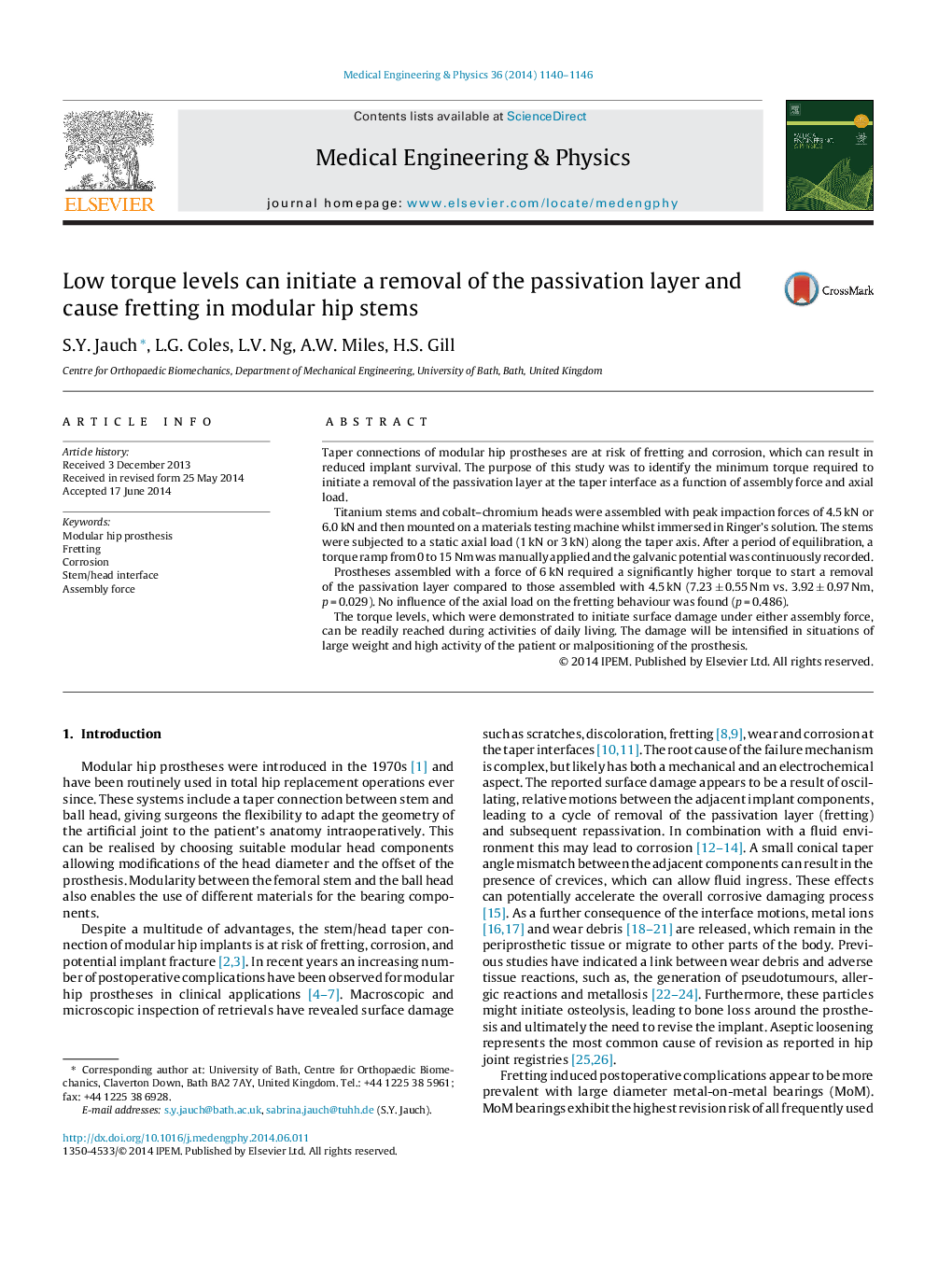| کد مقاله | کد نشریه | سال انتشار | مقاله انگلیسی | نسخه تمام متن |
|---|---|---|---|---|
| 875946 | 910816 | 2014 | 7 صفحه PDF | دانلود رایگان |
Taper connections of modular hip prostheses are at risk of fretting and corrosion, which can result in reduced implant survival. The purpose of this study was to identify the minimum torque required to initiate a removal of the passivation layer at the taper interface as a function of assembly force and axial load.Titanium stems and cobalt–chromium heads were assembled with peak impaction forces of 4.5 kN or 6.0 kN and then mounted on a materials testing machine whilst immersed in Ringer's solution. The stems were subjected to a static axial load (1 kN or 3 kN) along the taper axis. After a period of equilibration, a torque ramp from 0 to 15 Nm was manually applied and the galvanic potential was continuously recorded.Prostheses assembled with a force of 6 kN required a significantly higher torque to start a removal of the passivation layer compared to those assembled with 4.5 kN (7.23 ± 0.55 Nm vs. 3.92 ± 0.97 Nm, p = 0.029). No influence of the axial load on the fretting behaviour was found (p = 0.486).The torque levels, which were demonstrated to initiate surface damage under either assembly force, can be readily reached during activities of daily living. The damage will be intensified in situations of large weight and high activity of the patient or malpositioning of the prosthesis.
Journal: Medical Engineering & Physics - Volume 36, Issue 9, September 2014, Pages 1140–1146
